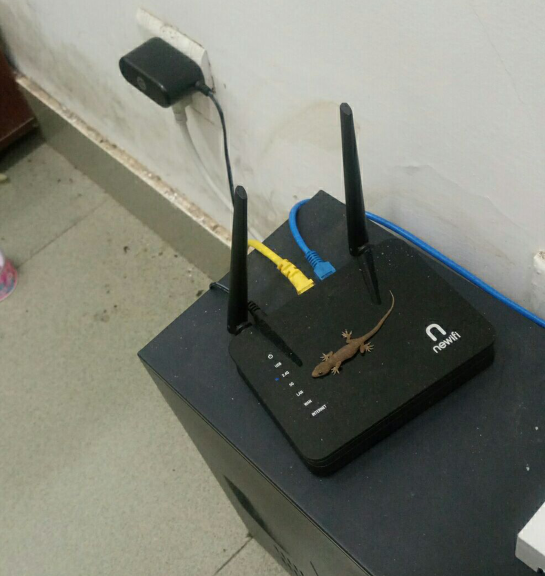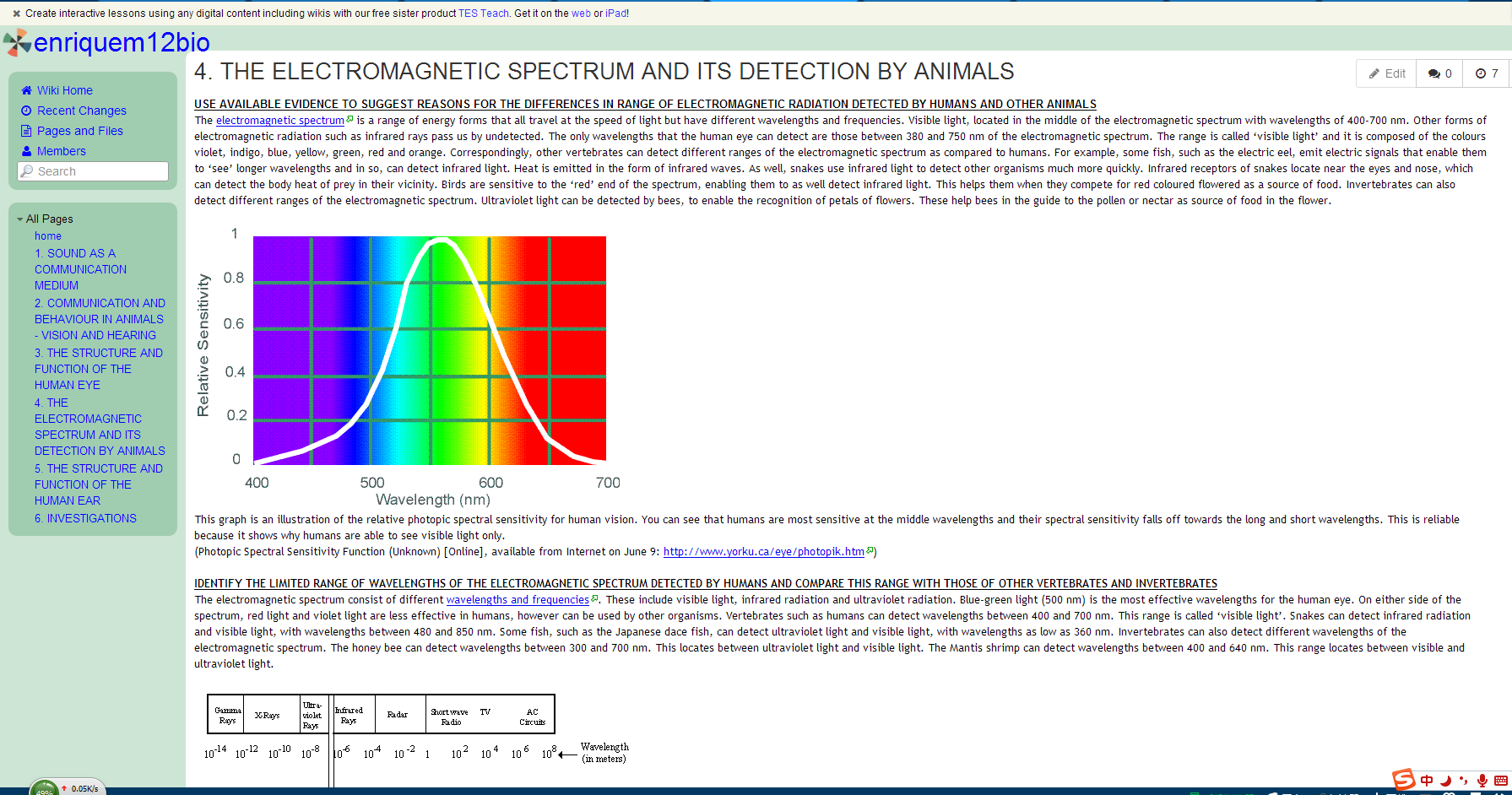最近,工作室来了一个小家伙:一只小壁虎:
来个特写:

仔细看看,其实还蛮可爱的,虽然我不喜欢这类爬行类动物,但是还是忍不住观察了好久.
经过这几天的观察,我发现一个规律:这只壁虎,貌似每天都待在我的路由器上.说实话,这类动物,一般不都是在阴暗角落,或者某个小洞里面,但是,最近老是趴在=路由器上,顿时让我来了兴趣:这只壁虎,难道也喜欢上网?(我是网瘾少年,一分钟不玩手机,不上网浑身难受).但是,壁虎怎么会喜欢路由器呢?
好奇心的促使下,我搞了个调查:
首先是,对路由器信号的参数进行了查看,下面是配置信息:

其他地方并没有什么有价值的信息,但是,我的注意力被{频率}吸引了,这个路由器工作频率是2.4GHz和5GHz两个信道,莫非,这个频率的信号频率发射电磁波可以对壁虎产生影响?
再次找资料,发现百度找不到相关的论文,想想也对,貌似没几个人愿意研究壁虎吧?(除了生物老师和达尔文).

有很多文章都是说电磁波对人类产生的危害,但是却很少有对壁虎的相关研究.于是决定用谷歌来试试.
但是,不知道是我的姿势不对,还是谷歌资料也很少,就是没有找到,不过在这个网站上面,涨到一些相关的内容:
https://enriquem12bio.wikispaces.com/4.+THE+ELECTROMAGNETIC+SPECTRUM+AND+ITS+DETECTION+BY+ANIMALS

讲的是,电磁波波长对动物和植物相关的影响.上面那一段,翻译了一下,大概是这个意思:
The electromagnetic spectrum is a range of energy forms that all travel at the speed of light but have different wavelengths and frequencies. Visible light, located in the middle of the electromagnetic spectrum with wavelengths of 400-700 nm. Other forms of electromagnetic radiation such as infrared rays pass us by undetected. The only wavelengths that the human eye can detect are those between 380 and 750 nm of the electromagnetic spectrum. The range is called ‘visible light’ and it is composed of the colours violet, indigo, blue, yellow, green, red and orange. Correspondingly, other vertebrates can detect different ranges of the electromagnetic spectrum as compared to humans. For example, some fish, such as the electric eel, emit electric signals that enable them to ‘see’ longer wavelengths and in so, can detect infrared light. Heat is emitted in the form of infrared waves. As well, snakes use infrared light to detect other organisms much more quickly. Infrared receptors of snakes locate near the eyes and nose, which can detect the body heat of prey in their vicinity. Birds are sensitive to the ‘red’ end of the spectrum, enabling them to as well detect infrared light. This helps them when they compete for red coloured flowered as a source of food. Invertebrates can also detect different ranges of the electromagnetic spectrum. Ultraviolet light can be detected by bees, to enable the recognition of petals of flowers. These help bees in the guide to the pollen or nectar as source of food in the flower. 翻译结果(当然我也看不懂,网络翻译,答题意思还是看得懂的:

看来,电磁波还真对动植物产生一些奇怪的影响.
这个图说明了一些动物可以感知到的波长:

因此,我猜想:壁虎是因为路由器发射特殊频率的电磁波,这个波段就是5GHz频段,这个频段,刚好是壁虎自身身体里面的某种信号.而路由器的波有可能影响了其自身身体的某些电波,让壁虎认为有"神"在召唤自己.导致它赖在那里不走.不过,由此是否可以得出:只要频率合适,电磁波是否可以对每一种生物产生影响?岂不是新的杀虫剂,捕捉小动物的方案就出来了?我只需要一个源释放信号,那些小动物乖乖的被我抓.
不过还好,折腾这么久,终于指导这玩意儿为何待在这里了.





















 5603
5603

 被折叠的 条评论
为什么被折叠?
被折叠的 条评论
为什么被折叠?








